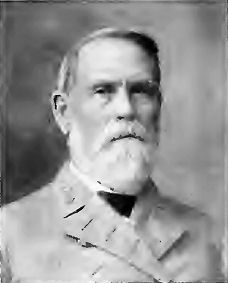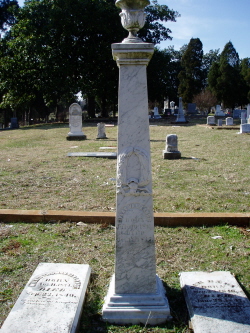The story of the father is the story of Texas.
 Isaac Van Zandt
Isaac Van Zandt
The story of the son is the story of Fort Worth.
 Khleber Miller Van Zandt
Khleber Miller Van Zandt
Isaac Van Zandt was born on July 10, 1813 in Franklin County, Tennessee, where his father had lived since about 1800. As a young man Isaac operated a general store with his father. In 1833 Isaac married Frances Cooke Lipscomb. A year later his father died, and Isaac took his inheritance and moved his wife and young daughter to Coffeeville, Mississippi, where he again ran a general store.
On November 7, 1836 Isaac and Frances’s son Khleber Miller was born in Salem, Tennessee, where Frances had gone to stay with relatives. Khleber Miller Van Zandt recalled in his biography Force Without Fanfare that he was named for one of his father’s clerks.
Isaac’s finances were ruined by the economic panic of 1837. At the time, he belonged to a debating society. One night Thomas Neville Waul, who would be a brigadier general in the Confederate Army, heard Isaac debate at a society meeting and urged the young man to study law.
Isaac obtained his law license in 1838.
The next year Van Zandt moved his family to the Republic of Texas because of the abundance of “cheap land.” The Van Zandts settled in Elysian Fields in what was then Panola County. The Van Zandts soon moved to what is now Marshall in Harrison County, where Isaac practiced law and became prominent in local politics.
Van Zandt was elected to represent Harrison County in the House of Representatives of the Republic of Texas in 1840. That year Isaac’s son Lycurgus was born. Lycurgus would become one of Fort Worth’s early physicians.
In 1840, even though Isaac Van Zandt was a member of Congress, the Van Zandts lived in a one-room log cabin.
Khleber recalled that beds in the cabin were built in the corners, with two walls serving as headboard and one side. Strips of rawhide laced across a bed frame served as springs.
At night the family illuminated the cabin by burning pine knots, which contain pitch.
At bedtime the Van Zandts would bank the fire in the fireplace, covering hot coals with ashes to keep the coals alive. If the coals went out, the family had to borrow coals from a neighbor or start a new fire with a flintstone.
A year later Isaac donated land to create a county seat for Harrison County. Van Zandt named the new city in honor of the chief justice of the U.S. Supreme Court, John Marshall.
Van Zandt also convinced the people of Marshall that Harrison County needed a college. He persuaded the Republic of Texas to set aside public land for this purpose, and Marshall College was founded.
 In 1842 Sam Houston appointed Isaac to the post of chargé d’affaires for the Republic of Texas in Washington, D.C.
In 1842 Sam Houston appointed Isaac to the post of chargé d’affaires for the Republic of Texas in Washington, D.C.
As Isaac went to Washington, his family went back to Tennessee to stay with relatives.
In mid-1843 Van Zandt sent for his family.
Khleber, then nine years old, later recalled life in Washington, where the family knew statesmen such as Senator John C. Calhoun and John Quincy Adams, who had been the sixth president of the United States.
Van Zandt recalled: “John Quincy Adams was a very austere man, and when he came walking down the street, the children would scamper out of his way. Perhaps we were frightened by his large, white beaver hat and the gold-headed walking cane he always carried in the summertime. Mr. Calhoun, though, made friends with us. Frequently of a morning, he would call to me as he started for the Capitol and—taking hold of my hand—would let me walk part of the way with him.”
 In Washington Isaac was instrumental in crafting the treaty by which the United States annexed the Republic of Texas in 1845.
In Washington Isaac was instrumental in crafting the treaty by which the United States annexed the Republic of Texas in 1845.
After annexation Van Zandt returned his family to Texas in 1845 and that year served as a delegate to the Texas state constitutional convention.
 He ran for governor of Texas in 1847 but died of yellow fever at the age of thirty-four.
He ran for governor of Texas in 1847 but died of yellow fever at the age of thirty-four.

Isaac Van Zandt, who helped bring Texas into the Union, is buried in the town he helped to found.
Van Zandt County was named for him, as was Fort Worth’s Fifth Ward School. (The Van Zandt school on the near West Side was named for his son.) Marshall College was renamed “Van Zandt College.”
Rufus C. Burleson, who would baptize Sam Houston and serve as president of Baylor University for twenty-one years, said, “The name of Isaac Van Zandt, like a pure, unclouded star, shines resplendent. As a patriot, a profound statesman and a diplomatist, he had few equals and no superiors. To him Texas is largely indebted for her timely and auspicious annexation in 1845 to the United States.”





